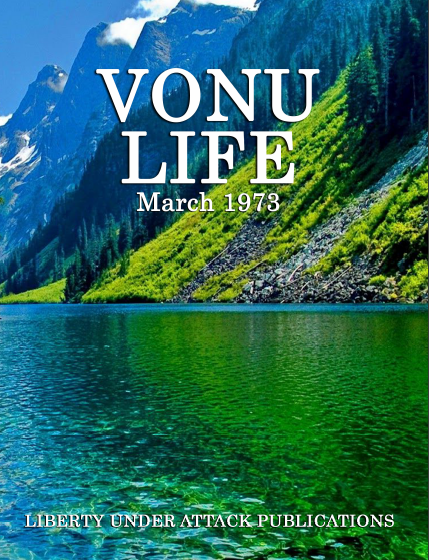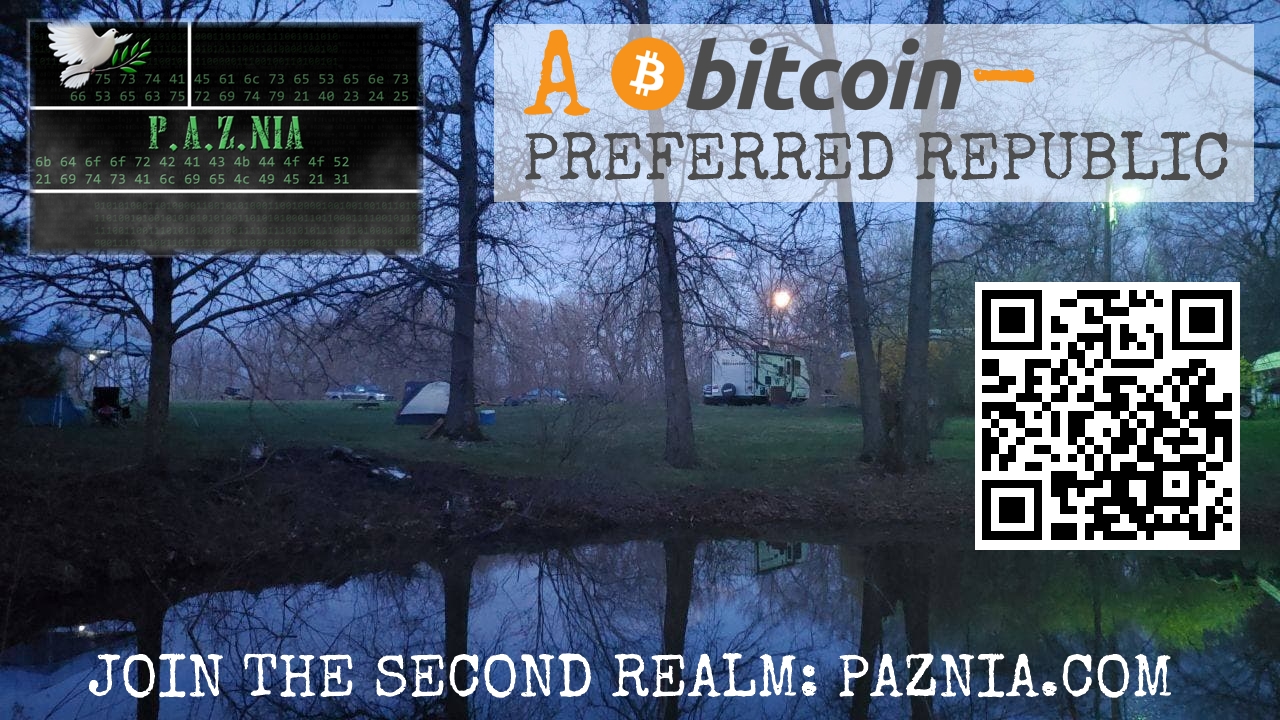Podcast: Play in new window | Download
Subscribe: Apple Podcasts | Android | Email | Google Podcasts | Stitcher | TuneIn | Spotify | RSS
Join Brian, and dive into more of the best of VonuLife/VonuLinc! Articles include:
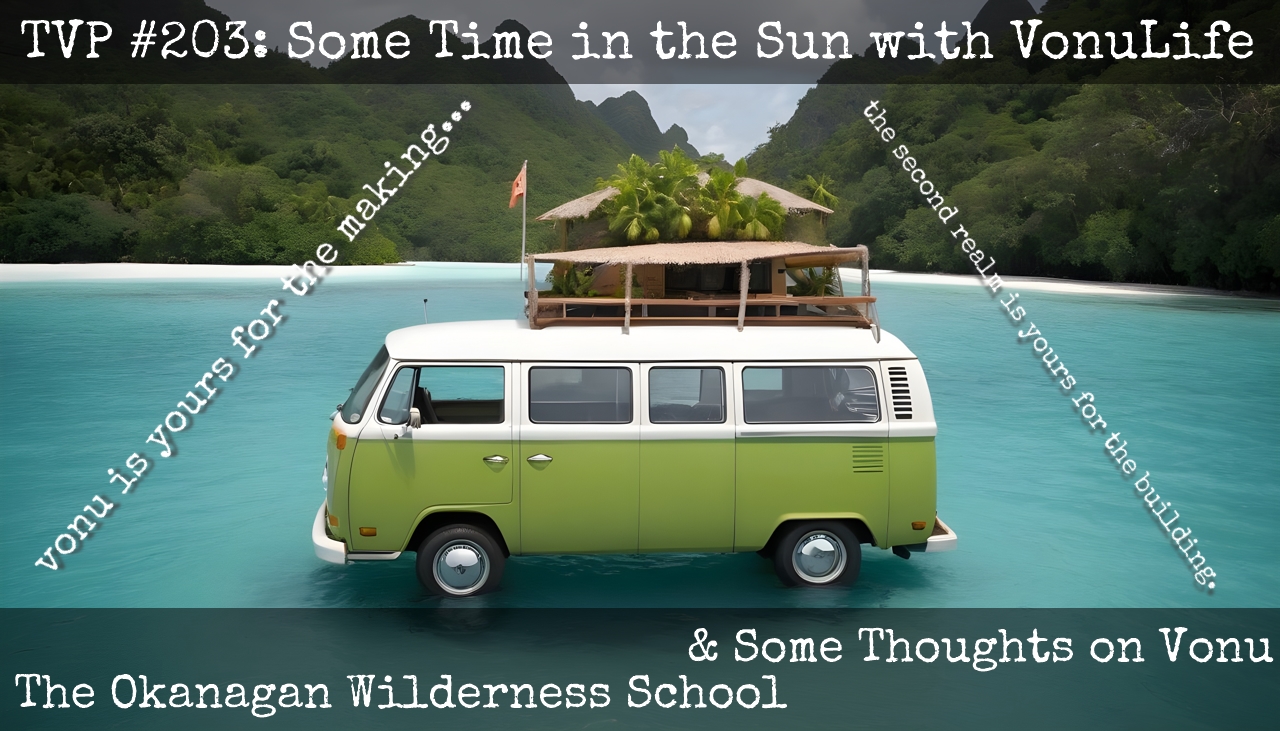
- A Solar Sauna by Jim Stumm
- Okanagan Wilderness School #1 & #2 by Tom Anderson
- Houses and Furnishings of the Atsugewi Tribe by Paul E. Schulz
- Operation Minerva Announcement (MORE INFORMATION)
- Some Thoughts on Vonu by Xavier Thor Challenger
Please enjoy, and keep a lookout for the ENTIRE COLLECTION of VonuLife, issues 1-17! And in the meantime, pick up a copy of VonuLife, March 1973!
A SOLAR SAUNA
I have recently built a solar heated structure that readers may find interesting. I’m sitting it now as I write this. These are the weather conditions here at present: separate: 23 degrees F, winds: 5 to 10 mph, sky: partly sunny with a thin haze, time now is 3:00 in the afternoon. This structure, which I call a solar sauna, is sitting in the field out behind my house. The solar sauna sits on a plastic ground cover which is lying on the snow. It is entirely unheated, except by the sun. I’m sitting inside completely nude, and I’m quite comfortably warm. In fact, if I stay here too long, I will probably get a sunburn.
The structure is made mainly from corrugated cardboard. I pasted up cardboard boxes cut flat, 5 layers thick, with wallpaper paste. The grain of each layer runs at a right angle to the preceding layer. This gave me a building material that was ¾ inch thick, fairly rigid, light, a good insulator, & dirt cheap (cardboard was free). Also sheets could be pasted up to any size even if only small pieces of cardboard were used. Edges were trimmed off straight, and edges and surface cracks and holes were pasted over with strips cut form paper bags using water paste. All sides of the solar sauna except tone are made of cardboard. The exception is made of clear plastic stapled over a light wooden framework.
The structures has basically the shape of a regular tetrahedron (3 sided pyramid). The equilateral triangles are 4 feet on each edge and there is a collar of 3 rectangles around the bottom which raises the pyramid up to 10 inches. This forms just about the smallest structure that one person could sit inside of in any comfort. To sit cross-legged with your back in one corner is the only possible position. The panels of the sauna were put together with masking tape. It was painted on the outside with varathane for waterproofing & on the inside with aluminum paint to get a highly reflective finish.
The top pyramid just sits loosely over the bottom collar. Although, the top overlaps the bottom section, the construction is a little sloppy and edges don’t meet perfectly. Some cold air does blow in, but it feels like a refreshing breeze. (I’m sweating quite a bit now.) The structure sheds rain and snow fairly well and stays dry inside, but after a couple weeks out in the weather, water is seeping up from underneath, waterlogging the bottom. The plastic may do more harm thann good by holding water like a saucer. Probably the bottom panel should be made of wood and raised up off the ground. The upper panels remain completely sound. Only the masking tape is coming a little loose on the inside. This structure is stable in windows to 20 mph & perhaps higher without being weighted down. The tetrahedral shape means the transparent side catches the sun’s rays for most hours of the day, without having to move the structure, as long as it points generally south, and there are no dark (cold) corners inside. No other shape would do this as well. You feel no cold or wind inside. The inside is a bright, cheerful environment. It makes sunbathing on any somewhat sunny winter day possible, and costs zero in fuel.
I see this structures as being of considerable interest to wilderness vonuans who are planning for survival during the winter in a cold but sunny locale. This structure can be built quickly and easily by one person, costs almost nothing, and will keep you warn with no expense for fuel down to perhaps zero degrees of temp and 20 mph of wind. The only drawback is that this structure is too small to stay in comfortably for long. I’m thinking about a similar structure which would be a tetrahedron with 10 foot edges. This would give a unit big enough for 2. You could stand, site, or lie down in it. Even such a structure wouldn’t be a complete solution, since the sun won’t be shining all the time. But in combination with a good sleeping bag, much of the warmth maintenance problem would be solved.
This structure has certain drawbacks. For one, it isn’t portable. But maybe a portable structure (backpackable) could be constructed on the same principle. Also it would be highly visible and conspicuous. But then, it could be hidden in trees and brush as long as the south side is left open to the sun. And it may not be visible as far off as a column of smoke rising form a wood burning heater. There’s condensation on the inside of the plastic, probably from my breath, but it’s not a problem if you avoid touching the plastic. It may reduce the heating effect of the sun by cutting down on the transparency. There’s no condensation on the other surfaces and they are warm to the touch.
As I get out of the solar sauna, 2 things strike me vividly: I really am sitting on the ground in the middle of all this snow, and it really is cold out here.
–JIM STUMM
[SECOND ARTICLE CONTINUES BELOW]

EMAIL [email protected] & SEE HOW WE CAN HELP YOU SHARE YOUR STORY!
Okanagan Wilderness School #1
RAYO…not too much to say about Okanagan Wilderness School right now except that it’s pretty far from being a “school” in any common sense of the word. As you know, we went all out for several years – going after boarding students and individuals who were open enough to live with the absolute freedom that our environment permits, and talented enough to free those city-raised boarding kids.
We ran into lots of trouble: first of all, most of the people were from the U.S., which means that they had no experience at all either with wilderness or with themselves. Mainly, they were just so “trip-oriented” that they couldn’t see what was actually happening around them at any given time. Likewise with the older kids, although the younger ones were less of a problem
We’ve always had our visitors – the ones who were decent enough to let us know they were coming – camp by themselves for awhile before making contact with them; that solved the outside infection problem as well as getting the un-strung a bit before trying to relate with them. After a time, we realized that everyone over the age of about 12 was going to need some time to become acquainted with life, so we would have each couple camp alone in an isolated area, totally wild and touched, for maybe a week, then they would split up and camp alone for another week. Then, their kids, if any, would join them for another week, followed by a week with another family who’d done the same or who was already with us. This “therapy” solved nearly all the problems.
The only trouble from the bludg came from the fact that the Dept. of Immigration and Manpower was very much concerned about all these Americans coming in without legal status in Canada; they’d be subject to deportation if they looked for work or found it necessary to use our freed medical or hospital care, or went after welfare. So we got carefully looked over. This was when the flow of exiles from U.S. fascism was at its peak anyway, so the Mounties were really hoping trying to keep up with all of them. In case you didn’t know it, there are about 200,000 American exiles now in Canada (not “a few hundred” as Nixon says frequently) and many others in Sweden.
A big visitor problem was dogs; we made it quite clear to those who wrote ahead that we couldn’t take any Lassie-trips, but lots of people tried dropping in. Many failed to find us, but most of those who did had a dog or two with them. One of our guys just looked up one day to see a dog racing toward him through a garden of seedlings; he grabbed his rifle and shot it dead without a second thought. And a few minutes later, these two Californians came wandering in yelling their dog’s name over and over. Stuff like this kept us uptight all summer. Our wildlife doesn’t like dogs, our gardens don’t like dogs, our concern for health, serenity, and nice peaceful wholeness just doesn’t like dogs. Aside from that, just the sound of a dog barking – or someone barking at a dog – is too much to take out here.
So anyway, we’re getting back now to what we originally intended: a bunch of hermits, hermit couples, hermit kids, living wild and free over thousands of miles of wilderness. The 160 acres of “school” property has become our “village”; a place to come together, to trade, make things, fish in the lake, make medieval music, do Balkan dances, grow the food, and good around. We spend evenings often just enjoying the beauty of young happy faces, eyes shining in the firelight.
I was just thinking how long it takes us city people to get free. This is my 14th year living “’out-of-doors” and most of that time in truly wild places. But it took awhile to become…I guess I’ll call it non-verbal; when the mind-chatter went away, and everything seen, smelled, heard, touched, and tasted was experienced directly without breaking it all down into words. Direct sensual experience. I’d guess that many of our Native people enjoy open sense too, but I wonder how many whites? Maybe just some of us Vonu types who’ve been able to overcome the heavy condition which causes us to intellectualize everything. Comments anyone?
Well, I should type this over but I’d probably make just as many mistakes and slop it up, and I don’t have a better ribbon either.
I have Vonulife copies #4, 5, 6, 7, 8, 9; would like to have all others; really want to know how my kindred souls are making out.
–TOM ANDERSON
~~~
OKANAGAN WILDERNESS SCHOOL #2
(Somewhat outdated) 1) A community of aware young families concerned with the no-compromise survival of their children, themselves, and the earth; 2) a sanctuary for the children of those yet unable to leave the deadly cities; a retreat for “specialists”; a place to think, re-evaluate, and integrate – away from the stifling fragmentality of the institution.
We value SPACE – for children and adults alike. We see no reason in huddling together, forever surrounded by our own species. We’re learning what it is to BE – not how to live as a group…
Being free of modern social anxieties, abstractions and trivia, we have much more of ourselves to give to our children. It’s not necessary (in Canada) to isolate ourselves socially; our seclusion is mostly for environmental reasons.
It seems obvious that a child cannot learn what is real and meaningful from someone who is doing something unreal: teaching. In a truly natural environment – where normality is reality – the child may see with unclouded vision, and sort things out with a fresh mind. Thus, he is uniquely able to recognize and deal with irrelevancies and illusions.
We want to avoid the reactionary substituting common today: leaving one crowd (family) for another (commune); changing form familiar distractions and escape techniques to novel ones, or from one wet of comforting rituals to another; opposing social regimentation with impulsive extremes rather than genuine spontaneity and natural flowing. Since we find spiritual joy in the fullness of life, we needn’t pursue it through vain, obsessive faiths, or any of the other delusive methods used by those in unique, unhappy places.
Although, we still have room for a few families and a limited number of individuals (including kids), we are no longer taking people as “teachers” or “students”. We find that our “teachers” often have the most to learn, and our youngest children – the free, unhurt, unconditioned little people born right here – are the ones who have the most to teach. We hold no formal classes (as should be obvious by now…
Our wilderness is the real thing and we want to keep it that way. We therefore exclude motor vehicles, dogs, more than a few grazing animals, and humans who have not yet learned respect for biological diversity.
Houses and Furnishings of the Atsugewi Tribe
by Paul E. Schulz
The Atsugewi used earth-covered lodges as their permanent winter dwellings. These varied in size from about nine feet in length, for a single family, to more than thirty feet in length for a chief’s house which was usually larger than other houses. Most frequently houses were about twenty feet long and somewhat narrower, being occupied by three to five families. The earth lodge was elliptical in shape with one center post planted firmly in the earth floor somewhat back of true center. This supported beams running to two smaller secondary posts and to earth shoulders which resulted from excavation of the entire floor to a depth of about three feet. On the beams, other poles or rafters and bark slabs (usually of incense – cedar) were laid. The whole sloping roof was then covered with pine needles and a layer of earth.
The main entrance was through a hole about in the center of the roof. Over this a heavy mat was placed in bad weather. This opening also served as a smoke hole. A ladder made of two poles with cross pieces tied on with serviceberry withes was used inside.
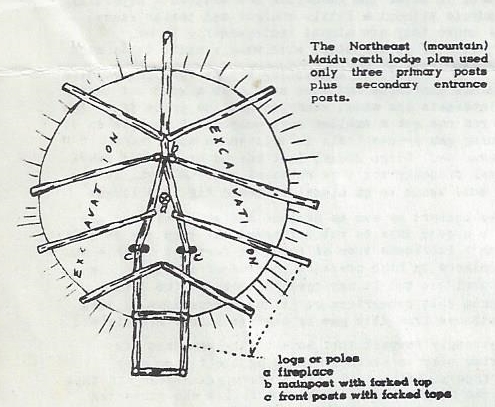
A secondary entrance of small size, used by children, was built horizontally at ground level on the south (front) end of the house. It projected tunnel-like a short distance beyond the lodge outside wall. The main purpose of this ground level opening was to act as a ventilator duct to supply draft for proper burning of the cooking and house warming fire which burned in front of the center post. At night, the ventilator duct was closed. This reduced air supply, causing the fire to burn very slowly. Glowing coals developed as a result. These produced reduced but adequate heat for the occupants who slept with their feet to the fire. Men did all of the house construction work except for excavation. The women did this with digging sticks and wooden or basketry scoops with which they threw the dirt out of the pit. Excavation of the floor of the lodge not only made it easier to construct a strong house, but contributed materially to the warmth of the standard winter house.

There was no furniture as such. Each family used an assigned portion of the house, and cooked its own food, but utilized the central communal fire. A thin layer of grass, carefully kept away from the fires, covered the floor. The Indians slept on the floor mats made of tule. During the day, these and the sleeping blankets were rolled up and provided the only seats. However, sitting usually consisted of squatting on the floor.
Blankets of deer and elk skin were generally used. Atsugewi also used loose tule or grass blankets and all our tribes employed both woven rabbit skin and patchwork rabbit or fox blankets. Yana in addition to all the foregoing utilized bear skins: sometimes they removed the hair from their blankets.
Atsugewi pillows were of bundles of leaves or grass, while those of the mountain Maidu were harder, being merely piles of small poles, blocks of wood, or rocks.
Interior earth walls of the houses were sometimes hung with tule mats or skins fastened with pegs to prevent dirt from sloughing off and rolling onto the floor. A few shelves might also be provided by laying wooden slabs on sticks driven into the dirt walls.
There were other less substantial winter houses consisting either of small double lean-tos of bark slabs or conical houses on frameworks of slender poles and with shallow excavations. Some dirt was thrown against the outside walls for added warmth. Lazy people, who were usually consequently poor in the necessities and comforts of normal Indian life, lived in this more flimsy type of house. Also, women when indisposed repaired to such huts. A doorway was left in the sliding to be closed by a tule mat in these little houses. They were also equipped with smoke holes for central fires.

Atsugewi summer houses as such really did not exist. Summer camps were little more than circular enclosures of brush, juniper, or other conifer limbs or of rock. These were ten or fifteen feet across with openings to the east. There was no roof, although branches and bark slabs might be put over crude frames in rainy weather. If a person were caught in a sudden shower, he might mak3e a temporary shelter by leaning bark slabs, if available, against a large rock or log lying on the ground.
Atsugewi did not have any separate sweat houses nor dancing or assembly chambers, but used the larger earth lodge houses for these purposes. The largest belonged to chiefs and to other well-to-do Indians. Heat for sweating was provided directly by fire and not by production of steam as was the case with Plains Indians who threw water on hot stones. In recent years, however, after introduction of the horse, Atsugewi learned the latter technique and also constructed Plains Indian type sweat houses of one to three person capacity. These were dome shaped, and built of willow poles set in the ground in a circle. The tops were bent over and tied down, and this framework was covered with skins.
Old type sweating was for men only, but Indian women – usually wives – also sweated with men in the new style separate sweat houses. Old time Atsugewi purposes in sweating were for gaining success in hunting, in gambling, and for general good luck. Some praying was done, but there were no formalized ceremonies or dances amongst the Atsugewi. Men sometimes slept in sweat houses.
In the case of all local tribes, sweating was followed by a cold plunge, if available nearby. Lacking this facility, a cold sponge bath was taken.
The mountain Maidu earth lodge for dwelling and sweating was similar to that of the Atsugewi. However, northeast Maidu earth lodges “koom” were simpler and smaller than those of northwest and southern Maidu. Three posts, often forked were used in place of 10 or 11 employed by valley lodges. Excavation was about three feet deep, circular in plan, and from 18 to 40 feet across. A large flat stone was placed upright at the foot of the main post between it and the fire in the center. The vertical walls of the excavation were usually covered or lined with vertically placed whole or split logs or with bark slabs. Logs were lain horizontally on the three posts as indicated on the accompanying sketch. Radial rafters supporting the roof were placed on these beams and sloping downward to the ground surface outside as well as to two small posts at the small open way or ventilator passage. Cross poles were placed horizontally on the rafters and on these, large pieces of bark, branches, and pine needles were successively laid. Lastly, a heavy covering of soil 8 to 20 inches thick was heaped on the structure. On top in the center a smokehole was left, large enough to serve as the main entrance originally, but after the coming of white man, the smokehole was made smaller, and, instead, the originally small ventilator tunnel which sloped from floor level up to the ground surface outside was enlarged, thus supplanting the smokehole as the main entrance. Originally a ladder of two poles with cross pieces tied on with grapevine or other wythes gave vertical access form the floor to the smokehole entrance. Dixon reports that a notched log was sometimes used for the purpose among mountain Maidu.
The room or lodge was occupied from November to March and was situated on the edges of wide meadows in mountain Maidu areas. At lower elevation, occupancy was more or less continuous.
Mountain Maidu did not have separate sweat houses. They always used a large earth dwelling lodge for the purpose. This was similar to the Atsugewi practice. These Maidu did, however, have a formalized sweat dance. Also different from the Atsugewi was the practice of men using the sweat house for gambling, handicraft work, and competitive singing.
The “hoe-bow” of the mountain Maidu was a hut, 8 to 15 feet in diameter and excavated 12 to 15 inches deep. Two main poles were securely tied near the end. From the resultin “V” at the top, shorter poles were laid to a pair of slender posts about three feet high and set about three feet apart along the edge of the excavation. Against this frame branches, bark, and leaves were piled and earth was heaped around the bottom. The doors of all such bark huts opened to the south and were hung with a skin or tule mat.
The rude summer shelter or shade provider was just like that of the Atsugewi.
Information on Yahi house details are somewhat scanty, but in all probability they were small conical bark-covered huts while some larger earth lodges were built to house several families – in general, similar, but perhaps smaller than those of the other tribes of the Lassen area. The large pretentious lodge, constructed solely for sweating and ceremonies, of the Sacramento Valley tribes seems to have bene lacking among all of our local tribes.
The common bark hut dwelling of the Yana was apparently built over a circular depressions two feet [illegible] of the house rising bout six feet about the ground. It was [illegible] the mountain Maidu huts, being a series of poles resting [illegible] the excavation. These met and were tied at the top [illegible] low slope, although some information claimed that the [illegible] were set so firmly that tying together was omitted. The frames were covered with pine and incense-cedar bark slabs leaving a smoke color near each apex. Earth was probably banked on the lower sloping walls. Entrance was never through the smoke hole in the case of Atsugewi and some mountain Maidu earth home houses, but by means of a small door at ground level on the south side. The entrance was protected by a little covered way extending outward three feet from the house wall, and decked over by a cable roof of low pitch. A ramp of low pitch extended from the floor of the house through this antechamber to the ground level outside as no steps were constructed.
The Yana lodge houses were not numerous. The ground plan was long, usually wedge or oval in outline and designed for several families, each with its own fire. As with the other tribes discussed in the booklet, such building also served as sweat houses. A ladder consisting of a notched log extended down from the smoke hole to the floor. One, two, or three center posts with radiating rafters and shorter side posts were employed. The Yana followed the Atsugewi practice of providing each earth lodge with a south facing, ground level, tunnel-like ventilator entrance of small size. It is possible that Yana did have a few special sweating lodges of the same design, but the matter is debatable. During sweating, Yana men talked and played; the main purpose of sweating was to make men strong.
It has already been pointed out that all four tribes which used what is now Lessen Volcanic National Park did so only during the summer. During their high mountain sojourn, the local Indians did not live in houses as such. There, resident during the three or four summer months was in temporary camps, usually roof-less circular areas to accommodate several families. These were fenced in with brush and were entered by one or more opening somewhat in the same manner as campsites reserved for visitors at their permanent village at lower elevations. Four-posted horizontal roofs, to provide shade, were sometimes constructed too. Yana seem to have made a lean-to our hut with grass and bark covering for summer roofs.
How To Assist The Learning Of Wilderness Vonu Skills
First, I think that the “classroom” approach to teaching (involving lecturing) is too passive for both parties. It is too easy for the lecturer to make assumptions about the listener, and it is also easy for the listener to daydream, go off on another thought, not interrupt out of “courtesy”, or agree with what is being said in order to cover ignorance. Whenever I teach (which is very rare), it is always on a one-to-one basis and the emphasis is on a “Socratic Method”. I will pepper “instructee” with questions and find that repeating questions to test knowledge is often very informative.
While a “demonstration” involves ACTING it is still a display in a similar manner as is the lecture. For example, if the subject were squat-spots, I might begin by discussing possible locations for a squat-spot. I would ask what factors the instructee would consider (though many people try to make this difficult by proclaiming complete ignorance – which requires more ingenuity by the “instructor”) and hopefully we would argue or discuss the matter to mutual profit. Then we would go about searching for a spot which would suit our (or the instructee’s) requirements, and further discuss how well the areas we looked corresponded to what we were intending with our words. Then I might as for ideas the instructee has for constructing shelter or bed. This approach might be more difficult with food but there is nothing to stop me from answering my own questions when that seems necessary.
Then there is “psychodrama” – perhaps this should be called “role-playing” since “psychodrama” involves the acting out of emotionally provocative incidents in one’s life. I attended a Free University “class” on “legal rights” in which a short discussion of situations and legal technicalities was followed by a physical enactment of being hassled by cops. It sounds corny, but the “instructors” certainly did a good job of making me sweat when they acted out the role of a couple of police trying to arrest me. I highly recommend this tool of theory-practice integration. –CHET
July 1, 1973: MINERVA REEFS NEW COUNTRY PROJECT
Project Minerva is still underway. However, the occupation of the Minerva Reefs has failed. The King of Tonga has rejected all negotiations for settlements of the Reefs of Minerva. To further strengthen his position, he has entered into a Mutual Arms and Protection Agreement with the Far East. Under International Law, the Libertarian Concept of Law, and the Natural Laws of the World, the Republic of Minerva (on the Reefs) was a nation in fact for a period of five days. This period of time occurred in January of 1972, when the original claimers were on the reefs. This claim failed for want of occupation.
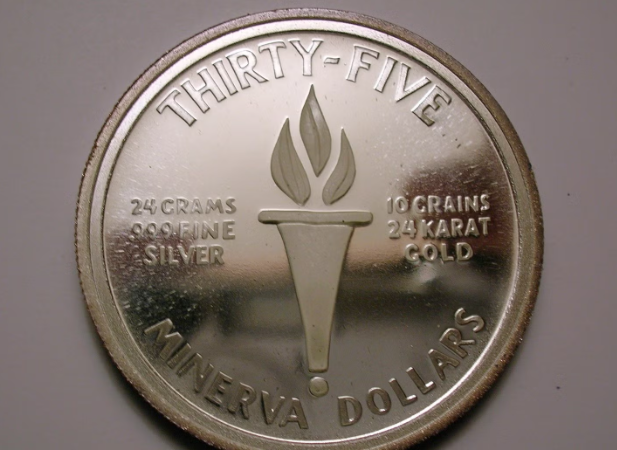
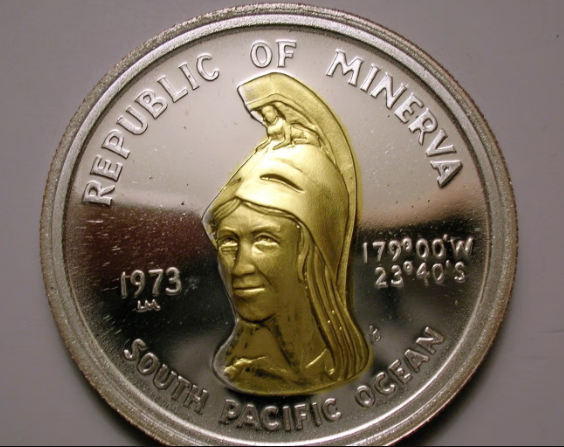
We have a 230 page research package available to any person desiring copies of the historical documents connected with the first valid attempt to set up a new government/nation under the Libertarian concept. It comes complete with the Leader’s letters and all other important documents, including the King of Tonga’s answer to negotiations for the settlement of the Reefs of Minerva.
It has been rumored that a few individuals have set up a government in exile. These individuals have no valid reason for doing so. To set up a government in exile you must have been forced to leave a country. The Reefs of Minerva were abandoned in January 1972. The settlement of the reefs is now impossible without the co-operation of the King of Tonga and his people which number 1,000,000 strong.
COCOS ISLAND
The negotiations for this island are satisfactory. We wish to clear up a rumor which was planted by a person who is in direct opposition to the success of any new country project. A is A published a report that the island was being used as an international drug center. A is A received this report via a planted news article in Costa Rica. The gentleman who sent A is A the news article works for the U.S. government. Until recently, Cocos Island has been used as a military field exercise training area by the Republic of Costar Rica’s Militia. This is a documented fact, not A is A’s published article that the island is being used as a pot plantation. We know, we’re there.
A NEW COUNTRY PROJECT
Satisfactory negotiations have been accomplished and funds have been paid. It is expected that it will take approximately two years to assure that this new country will have the support and protection that will be necessary for it to survive its initial internal adjustments and external pressures from governments which are opposed to individual rights. We are going forth very carefully at this time to insure that this nation will not be destroyed by individual greed, egos, or power grabs. The following this are taking place:
- We are working with the heads of five small nations to insure recognition and mutual protection in the area.
- Very quiet publicity and information on this project are going out across the World.
- Support is being sought from Individualistic Businessmen, Professional Men, and Women.
- Individualists are being screened, as to their intentions, for potential elected leadership positions and dual citizenship in this new country, when it is opened up.
When the above things are accomplished this new nation will be announced to the World. Many rumors will fly about, many already have; however, we wish to point out that you will be informed of the facts as they become fact, not fancy. We are not in this project to make a profit. We are in this project to do our small part to insure its success. If this new nation survives, it will stand as an example of true freedom for individuals. Perhaps there is a better way of government than some of the other systems across the World. (July 17th, Dr. Taylor will be guest on a Radio Talk Show, Radio London CJBK-129. Special Announcements will be made concerning this new country. Dr. Taylor will be a guest of Frank Ogden planned The Survival Institute, etc.)…
SOME THOUGHTS ON VONU
by MASTER SATAN aka THOR XAVIER CHALLENGER
THIS IS A COMPENDIUM OF THOUGHTS AND IDEAS I’VE BEEN WORKING ON AND ALSO IN RESPONSE TO MATERIAL I’VE SEEN IN VL.
Someone wrote once that Vonuans can never be self-sufficient in all things, and I tend to agree. The idea was that even without self-sufficiency, many things a vonuan needs can be manufactured outside the System or purchased within the system and maintained outside the System. Also components for self-manufactured systems could be obtained inside the System and then reconfigured outside it to serve our needs. This is the area I’ve been working. In planning my own conversion to a vonu lifestyle, I have had to consider transportation, communications, data storage, comfort, defense, and a multitude of other areas which I was unwilling to give up in order to be vonu. Although I am not yet living that vonu lifestyle, I am convinced that I now know how to do so and what it will cost me. My present activities are devoted to earning the money to accomplish my aims.
Let’s take transportation first: My answer to the transportation problem lies not in the conventional van camper. Such a vehicle is too easily subject to counter-vonu (CV) forces, has too cramped a living space (at least, one I can afford is), and is more or less subject to the restrictions of on-road travel. I considered that the only way to really escape such restrictions is an off-road vehicle. Conventional four-wheel drive vehicles are very expensive, however, and even more cramped for space. This made it clear that the vehicle that was needed had to be a “home made” or “custom” job. While this indicated higher initial cost, I estimated that it could still be built for less than a conventional vehicle, based on data available pertaining to dune buggies. So the first requirement was a four-wheel drive chassis and a reasonably powerful, but economical engine. But such a vehicle is still limited; it cannot cross rivers, and it could be chased by similar vehicles. Therefore, I decided that an amphibious vehicle would be in order; no police vehicle could chase it, no terrain could stop it short of heavy waves, storms, etc., in which case one would not wish to travel anyway. There was a precedent for such vehicles, of course; many military models existed, including a Volkswagen amphibian during WWII. And I had read where conventional Volkswagens could be cheaply modified to act as amphibians. Coupling this with the well-known dune buggy produced an inexpensive, amphibious, all-terrain vehicle. But I didn’t stop there: other features were considered. Conventional amphibians are very slow: the addition of a fairly powerful outboard motor (or perhaps a propeller hooked to a drive train takeoff) might up the speed and carrying capacity on water. The use of the hydrofoil was suggested by experiments involving military amphibians; this would increase water speed. Numerous experimental vehicles are described in the Popular Science, Popular Mechanics, type magazines every month. Features from these vehicles were considered. The recent discovery of Dr. Wankel of engine fame that a torpedo-shaped personal boat with hydrofoils could be used to travel at speeds up to 60 miles per hour through waves 10 times its length in height indicated that much could be done with the standard amphibian. Dual, large, on-off-road tires; hydrofoils; lightweight, tough fiberglass body; Lexan cockpit; motorized raisable outboard engines; all these would increase the vehicles’ capacity to travel any ground.
But the problem of shelter remained. But this was simply answered: do not try to make your vehicle your home! This was the flaw of the conventional van; shelter required considerable living space as well as storage space, greatly increasing the size of the vehicle, its weight, and lowering its maneuverability. The answer was to use various shelters already being used by vonuans: plastic tents, temporary shelters of natural materials, domes, etc. But how to carry supplies and shelter? The answer had to be a trailer. But the conventional trailer is as inefficient as the conventional car. Therefore I devised a trailer which was made of lightweight fiberglass, which opened up into a maze of poles and tie-downs and plastic tents covering many square feet. This trailer was towed on strap-on boat wheels (commercially available), could be equipped with its own hydrofoils, and still carry some cargo. The trailer was attached to the vehicle by an articulated hitch would raise its towing over rough ground. It would be packed like a fine watch, permitting maximum utilization of storage space.
SO: one would have a vehicle capable of eluding the laws, capable of street operation (based as it is on conventional chassis and engines), capable of off-road travel to a degree unknown to all but specifically designed all-terrain vehicles), capable of carrying all necessary implements of survival and comfort, plus able to tow the equivalent shelter of a house with it. With the use of inflatable plastic structures, one could increase this shelter space substantially.
Such a vehicle could ease the vehicular MTH (mean time to harassment) from 1-2 years to 5-10 years, as the vehicle could go places no other could – especially bludg cars. Thus greater comfort, storage, and technology would be permitted in more remote areas, enabling more vonu and better vonu. Any such vehicle is of course still subject to the bludg (so are bikes in some areas, and even pedestrians); however, an ATV could be operated primarily off-road, thus obviating licenses and such; such a vehicle could still be driven on roads in remote areas with phony license plates, etc., or at night, with the driver confident that if spotted by police, he could immediately take to rough ground or water without fear of pursuit. I regard the design and construction of such a vehicle of great important to the improvement of vonu; hopefully I will be able to build a prototype within a year or two, if I can acquire the funds. Such a vehicle could be built for amounts between $3-6000, depending on the amount of home labor, the cost of new or used materials, the cost of the used chassis and engines, the amount of hired labor, the degree of all-terrain and/or amphibious capability. This is somewhat higher than the usual van camper, but consider the increased capability and benefits. Furthermore, the widespread use of such vehicles could reduce the need for highways, and other destructive and expensive systems designed for the automobile. Such vehicles could be designed to be ecologically sound, by the use of new energy sources, and by the use of low-pressure tires which cause less soil damage than horses or human feet, and of course by care in driving.
And one vehicle can serve as boat and car enabling economies of hauling, etc.
All in all, a brilliant idea – if it works – and I’m glad I thought of it!
COMMUNICATION: How about laser transceivers? Plans for homemade jobs exist that can be built for $100 or so, with a range of up to eight miles; and improvements could be made easily. The only fault is bad weather intercepts the beams; but there should be ways around that. This would be as cheap as ham radios easily; a system could be designed around laser transceivers, cheap CB sets, etc. and the system could be used to make money during the coming Depression, servicing areas which loose service from the monopolies.
FOOD: Why hasn’t anyone mentioned fish in the context of land vonu? Locate yourself near a large stream in the northern California area, use fish traps, set-lines, fish poisons, slingshots, etc. to catch large amounts of fish easily and quickly. Many books are filled with info on this; fish protein is excellent, although the calorie content leaves something to be desired.
Herter’s has a book called “How to Get Out of the Rat Race and Live on $10 a Month” and has a good deal of info on this.
HEAT: The plans for solar devices seem to be coming out of the woodwork now, since the energy crisis. It is now clear that for a few dollars one can cook one’s food, heat one’s water for showering, perform various handicrafts requiring heat up to 2000°, heat one’s shelter and do many more things. Soon one will be able to derive electricity efficiently, and at that point vonu will really become easy. Of course, as long as these devices require direct sunlight, and as long as there are cloudy days, one must have backup systems, but efficient use of simple solar devices can cut one’s costs in such areas as fuel primarily.
WEAPONS: Some comments have been made about slingshots, blowguns, etc. I am presently acquiring a number of martial arts weapons, a slingshot, some large steel balls from Herter’s which they claim will kill a deer and go right through small game, when fired from a slingshot, a blowgun which is claimed to have as much penetrating power as a .22. I plan on acquiring an air rifle which is claimed to have killing power approximately equal to a .22 for up to, I guess, 50 yards, and which requires a few simple lever-action pumps to bring it up to power, plus various other devices, including silencers for the air weapons, since I believe even an air rifle is rather loud. I recently read a book on silencers, and those jobbies you see on TV are worthless; you need probably one at least a foot long to do a good job, and none will help if you bullet is supersonic. But some very good models have been made, some quieting flash and sound to the point where the weapon really does make no more noise than a hiss and the clack of the action. A number of weapons have been made especially for assassination, and I think every vonuan should eventually own a pistol or a rifle adequate to kill a human at some distance via sniping and equipped with a silencer. Silencers are expensive, starting at $300, but there are a number of books and someone good with tools could probably build one for less than $50. I recently read a book entitled the Poor Man’s James Bond, and believe me, it is very gut level, and completely detailed on making bombs, poisons, various weaponry, incendiaries, counterfeiting, use of electronic devices to activate explosives, terrorist tricks, etc. Every vonuan should have one; it’s available from Hillcrest Publications.
COMMERCE: Vonu commerce won’t come about until there is not only enough vonuans to make it possible, but enough communications and especially enough need. And since the purpose of vonuism is to reduce external needs, we have one strike against us starting out. I would suggest we not worry too greatly about vonu in groups, etc. and concentrate more on maximizing the extent of individual vonu. I firmly believe that a high-technology vonu lifestyle is possible at some cost, and considerable independence from outside maintenance, but the requirements include considerable knowledge of what’s possible today, and a willingness to utilize more money than most vonuans seem able to earn – say, $5,000 to start out with instead of $1,000. This brings up the problem of whether to make money first and then vonu or to vonu and then try to make money. I believe it is not either-or. I believe the most practical solution is to make a certain level of money first in any profession, then achieve vonu with an excellent MTH, and then develop an entirely new source of income based on vonu conditions. The usual idea is to profit and then try to vonu the profit source, and this is where the difficulty lies; particularly when one does something one likes on the outside, and is then reluctant to drop it in order to go vonu. I am earning money in various ways, and plan to change shortly to entirely new and more interesting ways; but when I go vonu, I may have to completely alter my means or even stop earning money altogether except for odd jobs occasionally. However, my ultimate goal is to return to society with the skills and ideas to enable vonu even in the heart of the society – remembering that vonu merely means relative invulnerability to coercion and does not specify how or where. It has been said that someone who utilizes deterrence without mobility is just another rival State; this does not logically follow. However, it is impractical from the point of view of the individual, since it would be difficult if not impossible for one person or a small group to develop the deterrence to withstand an entire society – without mobility, and/or concealment. Note that “and/or” – too often the choice is artificially narrowed down to “either-or”; “either” concealment “or” deterrence “or” mobility. This I think stems from the basic inability of many vonuans to think in terms of personal effectiveness, which is the main problem of the entire libertarian movement – and perhaps all movements. I am convinced that there is no reason why someone could not be concealed at some times, not concealed at others, using deterrence at times and not at others, moving to escape at times and not at others, or using all three (a disguised vonuan with phony ID, moving along a deserted highway, is stopped by a bludg, eliminated the bludg with a silenced weapons, and disappears into the hills.) The question is one of powers and how they may be used; if you have mobility, then you need concealment and deterrence; if you have concealment, then you need mobility and deterrence; if you have deterrence, then you need concealment and mobility. If you have one, you need three; if you have two, you need one; if you have all three, you need more of everything! The real mistake is to think: “Well, now I’m hiding out in these hills, I’m vonu.” That is not the case, particularly if you aren’t hiding out in those hills permanently, which is the usual case with most vonuans; they do come close to other humans (or dangerous animals) occasionally, and each occasion is a threat to their vonu. Since my entrance into the pages of Libertarian Connection, I have stressed personal development as the only means to achieve freedom, and this is as true for the vonuan as it is for the conventional man. And personal development is not limited to meditation or a new way of thinking; it means taking advantage of everything needed to survive, and this can cover the entire field of human endeavor under certain circumstances. Anyone who overlooks various possibilities will shortly find himself in difficulty; this takes into account everything up to and including old age – which is a prime threat and should be high on everyone’s list of priorities.
This brings up the question of “psychological liberation”, since the vast majority of libertarians in this world do not possess it – including myself to an uncomfortably high degree – and unfortunately including many vonuans. Rayo asked what attitudes toward the State are most conducive to effective action. I suspect the only answer is a combination of drama – the emotional effect of fictional and non-fictional accounts of successful self-liberation – and the acquisition of the actual knowledge needed to accomplish these ends. In other words, I think if one reads books such as Harry Brown’s, the success stories of various vonuans, and other types of self-liberationists, and then proceeds to gather up all the data needed to duplicate these successes, and mixes this all up with meditation, music, and the generation of positive attitudes by whatever means, then this eventually, slowly, painfully perhaps, results in some significant change. Sometimes the change is abrupt and explosive; usually it is slow. In my case, I have spent years making one wrong decision after another; lately I feel that I have made enough progress to the point where I think I can see exactly how to achieve vonu and where I believe that with the acquisition of a specific amount of money and equipment I can do it. This has led me to try to extend the requirements and thus the time required within the System, but I know that this is itself an indication of the strength I have been given by just knowing that if I have to I can split, say, now, or a week from now. So I have the strength to hang on another month or a year, knowing that it might make things better when I do split. The attitude is: “There are still a lot of good things available to me here, and I think I’d better stay on as long as I don’t incur extra risks or hangups.” This can easily become a rationalization for non-vonu, however!
Every case is different, depending as it does on one’s personal goals. My goal is a high-techno, very mobile, uninterrupted (by bludg) sort of vonu for the whole purpose of providing me with the solitude needed to master the Martial Arts and the Hermetic Sciences and the technological sciences. From this point of personal strength, I would then dart in and out of the System, creating havoc and reaping personal profits of a material and psychic nature, while still maintaining a high level of vonu – through the acquisition of power, if you will.
My “movementist” phase was extremely short, probably because I had been involved in other movements, such as the UFO movement, and thus had firsthand experience of their ineffectiveness. On the other hand, I am somewhat predisposed to movements by “nature”, so someone without that attitude might very well eliminate the movement phase altogether. I think it would depend significantly on whether his personal environment included movementists or vonuans, or both.
As anyone is aware who has been reading The Libertarian Connection, there is a disturbing trend in that publication to advocate so-called “amoral” coercive philosophies and anti-vonuan sentiments (usually based on the “I don’t want to eat weeds” philosophy). On the other hand, it is slowly seeping out that virtually all the writers for LC have some sort of vonuan fantasy about sea-mobility, or groups of libertarians occupying the Pacific Ocean, and what not. Therefore, it would seem that what is happening is that, as the System slowly crumbles, and as each libertarian’s personal situation does not seem to greatly improve, he begins to fantasize about escape from the System on the one hand, but rationalizes his failures on the other by denouncing the feasibility of vonu. I believe that all that is needed for these individuals to take their fantasies, as Harry Browne said, and “start from zero”: use these fantasies as the basic goal (if only short-term, even), and then devote their energies into actively trying to find out how to achieve these goals. This entails active research into what is physically possible in my areas: science, economics, personal finance, vonu techniques, criminal techniques, market research, etc. It costs money, but it produces psychological results like few other techniques I’ve used. And psychological liberation produces ideas which lead to more possibilities, and starts a reverse spiral upward to actual liberation instead of downward into depression and failure. It is slow and detailed work, but it does work.
Well, I’ll just leave the rest of this page for comments by VL’s editor, if he would like to use it. Anyone wishing to comment can write me. –Richard S. Hack, Albuquerque, New Mexico.
HEALTH LIBERATION/SELF-LIBERATION SPECIAL OFFER:
The Amazing AquaCure!
Interested in your own AquaCure? Save $125 with coupon code “vonu“, and help support the P.A.Z.NIA Department of Health/Wellness at the same time!

THE DIGITAL HOME OF #THEFREEREPUBLIC
